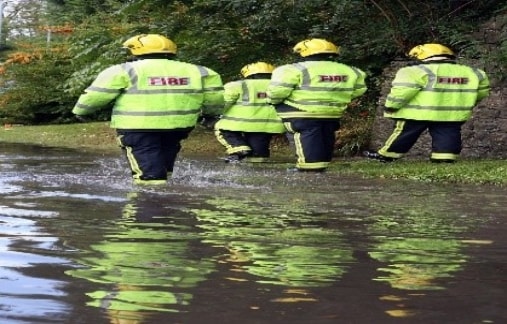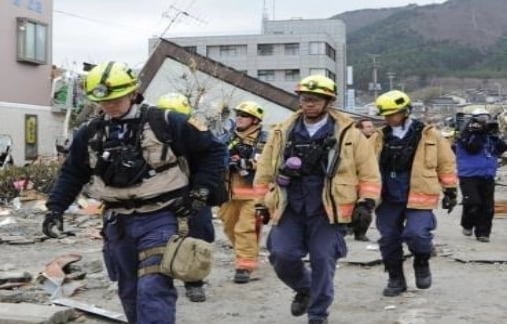Guidance for Pre-exposure Medical Screening of Workers Deployed for Hurricane Disaster Work



The primary goal for pre-deployment (or comparable pre-exposure) medical screening programs is to evaluate a worker’s fitness to perform potentially hazardous or stressful work safely, which includes the assessment of minimal physical and emotional requirements to perform work activities. Additionally, pre-deployment medical screening can be used to assess the ability to use personal protective equipment (PPE), and the worker’s immunization status. Pre-deployment medical screening also documents the workers’ health status for use as a baseline when interpreting the results of any subsequent evaluations. Screening can also be used to identify risk factors that should be mitigated before or during disaster work. Finally, while not a primary purpose in this context, screening may help detect subclinical or unrecognized disease for early intervention.
Pre-deployment screening is particularly important for work in areas affected by natural disasters because the potential for exposure to hazardous conditions or agents may not be easily predicted, adequately characterized, or effectively controlled. When exposure information is lacking, medical screening programs may be one of the few recourses for assessing occupational health effects related to disaster work; valid interpretation of post-work health effects requires baseline information for comparison.
At a minimum, workers should be screened for fitness, and baseline information should be obtained for all hurricane disaster workers before the start of response work. The level or extent of screening appropriate for a given work activity will depend on multiple factors, in particular the type of work activity anticipated and the extent to which hazardous conditions can be predicted.
This document provides general guidance on medical screening for workers before beginning disaster response activities and will be reassessed periodically and updated as appropriate. This guidance does not address issues related to the post-deployment period, which are addressed separately (https://www.cdc.gov/niosh/topics/emres/MedScreenWork.html). It is intended for occupational health professionals and other clinicians who are responsible for medical oversight of workers who will be deployed.
- Document baseline health parameters
- Identify individuals with health concerns that need to be addressed
- Identify individuals with specific susceptibilities whose activities may need to be restricted or modified
- Identify individuals not fit for anticipated tasks because of health reasons.
- Identify medications being taken and side effects of such medications that may affect or be affected by deployment
- Identify immunization or other preventive needs
- Identify training needs
- All workers who will be deployed or will move from usual activities to response activities
- Workers who are not in existing medical screening programs should be screened
- Workers who are currently in medical screening programs for their work should be re-screened if it is feasible, but may not need additional screening if circumstances require immediate deployment or re-assignment, or if the interval since their most recent screening is sufficiently short
- Screening approaches will vary depending upon the anticipated activities, working conditions, and potential exposures
- Pre-deployment (or pre-exposure) biological monitoring for exposure to hazardous chemicals is not generally recommended. Such monitoring is not practical for unanticipated exposures to hazardous chemicals. When exposures to specific chemical agents are predictable, workers should be adequately protected. However, there may be some instances in which obtaining baseline specimens prior to deployment for work in environments with predictable exposures may be helpful in subsequently assessing whether the protections used during this work are adequate and performing as intended.
- Because the primary reason for pre-deployment medical screening is to evaluate workers’ fitness to perform potentially hazardous or stressful tasks safely, screening immediately before deployment is optimal.
- Workers who will be performing their usual work and are currently in work-related medical screening programs may not require repeat pre-deployment screening; however, such screening may have benefits, and attempts should be made, prior to or as soon after the deployment date as practicable, to assess for changes in health status that may have occurred in these individuals since their last screening.
- For those already deployed and not in any existing work-related medical screening program, screening should be done as soon as practicable.
- Further screening may be necessary during deployment, depending on results obtained during pre-deployment screening.
The specific types of information elicited may be modified based on anticipated work characteristics and deployment location; however, the following data elements should be obtained for all individuals:
Personal information
Identifying and Contact Information
- Name, address, appropriate telephone number(s), e-mail addresses (work, personal)
- Age, date of birth, birthplace, sex, social security number
- Contact information for someone who will know where the worker is 6 months after leaving response work
- Response organization:
- Employer vs. volunteer organization (indicate which)
- Name and address
- Contact person’s name and telephone number
Usual work
- Industry, occupation, job tasks, number of years
Special needs
- Primary language
Health status
- Pre-existing medical and mental health conditions
- Relevant lifestyle factors (e.g., smoking status, exercise habits)
- Symptoms currently experienced
- Medications and side effects
- Other specific risk factors (will depend on job, e.g., use of personal protective equipment, exposures)
- Immunization status: routine adult and any special risk (e.g., health care worker)
- Pregnancy status (female workers)
- Assure worker has enough prescription medications to last the expected duration of deployment (with a comfortable safety margin in case of delayed return to home)
- Include question(s) to elicit whether workers have physical or mental health concerns that they would like to be addressed
Response work
This information should be provided by the worker’s agency, organization, or employer.
- Expected deployment location(s) (as specific as possible)
- Anticipated tasks and circumstances under which tasks will be performed.
- Anticipated date of deployment.
- Anticipated duration of deployment
- Anticipated need for, use, and type of PPE
- Adequacy of training for tasks
- Characteristics of expected work locations and relationship to known or suspected hazardous agents or conditions
- Anticipated shift schedules: hours per day, days per week, rotation schedules
Some workers with significant pre-existing medical or mental health conditions may need more extensive screening. Other workers may need additional screening because of the likelihood of working in hazardous conditions. Additional screening may include a more comprehensive medical history and review of systems, a physical examination, or, in some instances, laboratory testing, as indicated by clinical judgment and good occupational medical practice. The specific content should be determined by the following factors:
- Report of or concern about pre-existing illness, symptoms, physical impairment, or emotional sensitivities that may be adversely affected during deployment
- Use of certain PPE such as respirators
- Anticipated tasks, working conditions, locations, or exposures that are known to be hazardous or have specific exposures that may warrant medical monitoring
Possible determinations from the initial basic screening are:
- Cleared for deployment with no restrictions
- Cleared for deployment with specified restrictions on types of activities/exposures
- Recommended for further medical screening
- Recommended for specific training prior to clearance
- Recommended for further medical screening
- Not cleared for deployment
- Simple and concise standardized screening instrument(s)
- Designated custodian for the information collected
- Policies in place to assure confidentiality and security of information collected
- Appointed program administrator
- Clear identification of those with access to data results
- Data collection locations convenient to workers (e.g., central location where workers report)
- Private area for conducting screening to maintain privacy
- Secure space to maintain records containing confidential information
- Maintain and store records in electronic format when feasible
